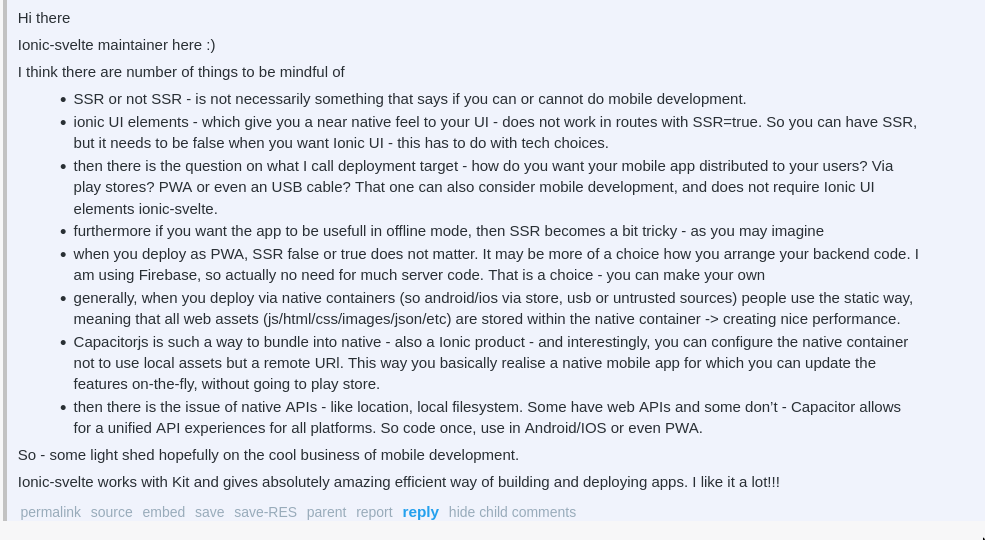tags : Web Development
PWA resources
Capacitor
The biggest advantage Capacitor brings is full native access and app store distribution. Yes, PWAs can do a lot, but they
- Can’t interface with every native iOS/Android SDK or feature out today or coming out tomorrow. Capacitor can.
- Can’t use the massive ecosystem of third-party native SDKs. Capacitor can.
- Can’t be distributed on iOS in the app store. Capacitor apps can.
So, if those things matter to you, Capacitor is the way to go. You can build your app such that you’re building a PWA first but then “enhancing” it with native Capacitor plugins or custom native code. The decision is not either/or because Capacitor was built to enable PWAs to run natively with almost 100% code sharing on the web.
- Ionic CEO
- Capacitor is PWA on steroids
- It’s not “native native” but it’s more than “good enough” for most types of apps.
- Capacitor allows for certain features that are only available on native and not PWA. For example, local notifications
For Svelte and Capacitor

- Cross-Platform Sveltekit & Capacitor Application: Yes It’s Possible! - Ionic Blog (Turn off
SSRmaybe? i.e Built sveltkit in SPA mode) - Learn PWA | web.dev
- SvelteKit PWA Guide
Gotchas of PWA
- You cannot directly publish a PWA in the App Store, but you can wrap it with Capacitor and publish that.
- Push notifications are not very well supported
- Capacitor
- you’ll have a hard time replicating native modals, sheets and navigation stacks. i speak from experience, as i’ve recently given up on using capacitor because implementing swipe to go back is a hacky deep hole.
Others
- There’s reactive native and https://svelte-native.technology/ etc. and then there’s PWA.
- Quickest to MVP is PWA.
- I’d prefer doing MVP with PWA and then if things takeoff get some dedicated swift and flutter dev to make for android and ios.
- There’s also https://www.pwabuilder.com/ which is probably capacitor alternative
- Caniwebview.com – Like Caniuse but for Webviews | Hacker News